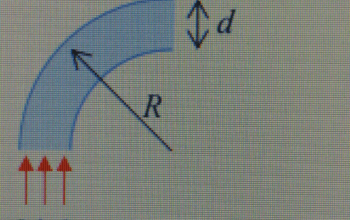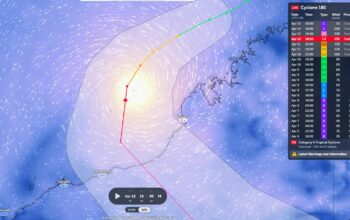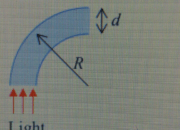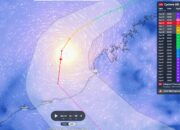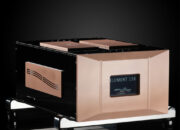The DAΦNE (Double Accumulator for the Physics of Nonlinear Effects) collider, an iconic apparatus located at the National Laboratories of Frascati, Italy, has recently undergone significant advancements, enabling it to accelerate particles with unparalleled efficacy. This development marks a pivotal moment for experimental particle physics and serves as a testament to human innovation. The metaphorical tapestry woven by these technological advancements paints a picture of scientific odyssey, where the collision of ideas and matter brings us closer to unraveling the universe’s deepest secrets.
At its core, DAΦNE operates as a synchrotron, a type of particle accelerator that utilizes electromagnetic fields to propel charged particles to relativistic speeds in a circular path. This ingenious system inverts the traditional paradigm of collider physics, as it is tailored specifically for electron-positron collisions, allowing researchers to probe the intricate dynamics of matter at comparatively lower energies while still uncovering profound revelations. The progress achieved in optimizing its operational capabilities illustrates not only advanced engineering but also a sophisticated understanding of quantum mechanics and particle interactions.
The recent upgrades to DAΦNE feature enhancements in beam luminosity, which is a measure of the number of particle collisions occurring per unit area per unit time. With luminosity as the lifeblood of any collider experiment, DAΦNE has rejuvenated its capacity to generate data-rich environments for physical phenomena that elude our conventional understanding of matter and antimatter. The newfound ability to accelerate particles more efficiently metaphorically mirrors the swift currents of a river—navigating through entangled branches of knowledge and leading researchers towards the fertile plains of groundbreaking discoveries.
One of the most significant implications of the DAΦNE upgrades lies in its ability to probe existing theories surrounding the Standard Model of particle physics. This model is often likened to an intricate mosaic of fundamental particles—quarks, leptons, and bosons—interacting within the framework of fundamental forces. However, as scientists delve deeper into the fabric of reality, inconsistencies and enigmas arise, beckoning an exploration beyond the established borders of the Standard Model. DAΦNE, with its enhanced capabilities, stands poised to illuminate these shadows, providing insight into phenomena such as dark matter and the Higgs boson, the latter of which remains a critical lynchpin in physics’ quest for coherence. Just as the alchemist’s dream was to turn lead into gold, the physicist’s pursuit transforms the ephemeral collisions of particles into foundational knowledge.
In the grand scheme of particle physics, DAΦNE serves as a microcosm of the broader quest for knowledge. As scientists converge upon the Frascati laboratory from diverse disciplines, their collective intellect fosters a vibrant environment that transcends conventional silos. Collaborative discourse ignites novel ideas. New methods of experimental design take shape. The act of colliding particles mirrors the synthesis of knowledge—melding theoretical constructs with empirical evidence to form a comprehensive understanding of the universe.
As DAΦNE accelerates particles, it simultaneously advances the art of international scientific collaboration. Numerous research institutions and universities share technologies, methodologies, and findings, crafting an intricate network akin to the filaments of a cosmic web, where each node represents a brilliant mind contributing to an overarching mission: unraveling the mysteries of existence. The recent upgrades also emphasize the paramount significance of community support and governmental investment in research. In a fleeting moment, DAΦNE has become not merely a collider but a crucible of intellectual inquiry and creativity.
The unique appeal of DAΦNE resonates with the historical significance of the site itself. The allure of Italy’s rich scientific legacy, coupled with its picturesque landscapes, embeds the collider in a cultural tapestry of innovation and exploration. Each experiment conducted within the illuminated halls of DAΦNE reflects a pilgrimage of sorts, a journey towards enlightening the human condition through a greater understanding of the fundamental forces that govern our universe. The collider’s location is a bastion where the sciences and the humanities intermingle, reminding us that exploration transcends the mere act of investigation; it ultimately seeks to answer questions fundamental to our existence.
Moreover, the evolution of DAΦNE’s capabilities serves as a vivid testament to the necessity of innovation in scientific endeavor. The physicists, engineers, and technicians behind this feat embody the relentless spirit of pursuit that has characterized humanity since the dawn of civilization. Just as the artists of centuries past pushed the boundaries of their craft to mirror the complexities of life, so too have these visionaries elevated the standards of particle physics, embedding their aspirations within the very particles they collide. The DAΦNE collider thus stands as a tribute to the fusion of imagination and technology—a vessel propelled by the quest for knowledge, charting the vast, uncharted waters of the physical universe.
As DAΦNE accelerates again, the implications ripple outward, influencing not only the trajectory of particle physics but also the philosophical discourse surrounding our place in the cosmos. This cycle of acceleration, experimentation, and reflection mirrors the ongoing dance of particles within the collider itself. Energized by collective purpose and ambition, DAΦNE is more than a particle accelerator; it epitomizes the ceaseless pursuit of understanding in a universe defined by complexity and mystery—a testament to the indomitable human spirit and our intrinsic desire to uncover the fabric of reality.


